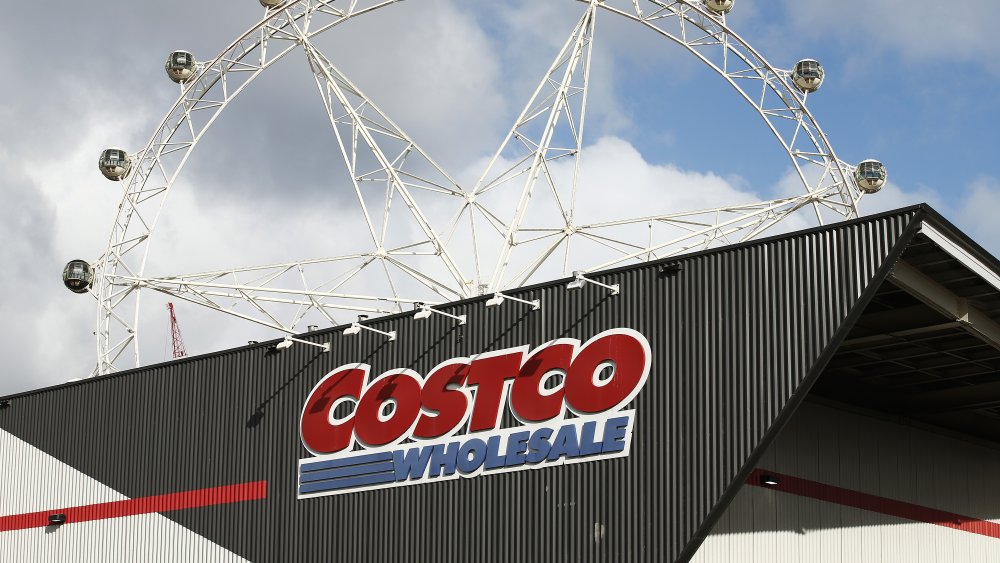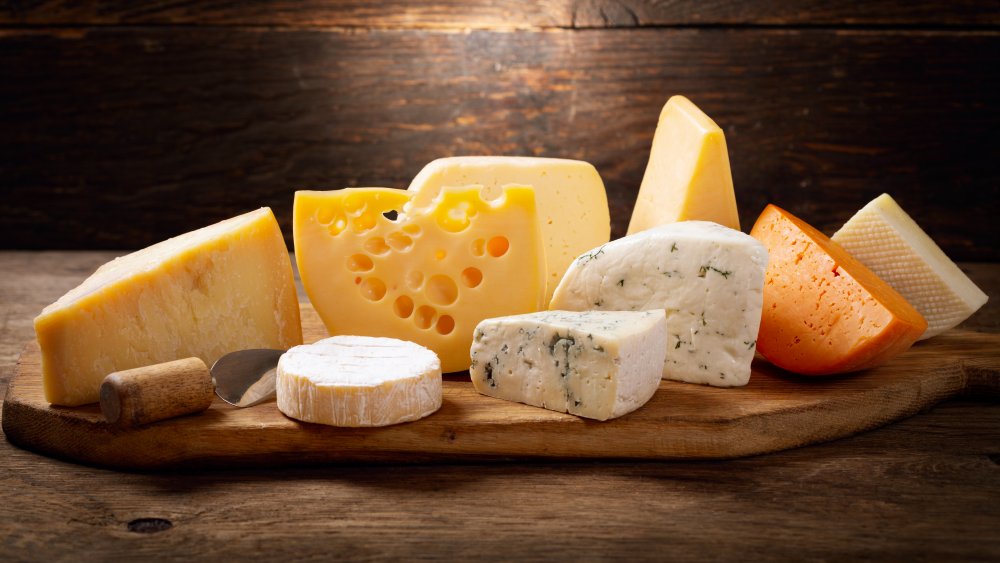The Real Reason Costco's Cheese Is So Cheap
Costco opened its doors in 1983 in Seattle, Washington (via Costco), and boy how this retail warehouse giant has grown. According to its 2019 annual report, Costco has about 99 million cardholders and counting. They have access to some incredible deals and steals that have come to define all things Costco. It's so beloved that in 2020, it ranked sixth in Dunnhumby's third annual Retailer Preference Index, which takes a deep dive into the U.S.'s $700 billion grocery market (via Business Wire). One of the company's defining philosophies is providing the best prices for its members, and to that end, they are constantly re-evaluating its stock so it can do just that (via Reader's Digest).
Among Costco members' favorite items to snatch up is cheese. It's hard not to want to stock up on all things fromage when you walk down the aisle and see the deals. The founder of My Frugal Adventures told CNBC in 2019, that even when you factor in brands like Tillamook, she paid at least $3 less for cheeses at Costco than she would at a normal grocery store. But what is the real reason Costco is able to sell its cheese so much cheaper than its competitors?
Costco passes along cost savings to its members
When CNBC did its own cost analysis of cheeses sold at Costco, it found that a double-pack of the chain's Kirkland brand shredded mozzarella sold for 4 cents per ounce less than the leading regular grocery store's name brand cheese. That difference can result in significant savings for the consumer, but why is Costco able to do this? A Wall Street Journal article points out that when you are buying Costco's Kirkland brand you are getting it for 20 percent less than the brand-name alternative. But anything bearing the Kirkland name must also be good for the retailer's bottom line.
Per CNN, the cost savings that Costco passes along to its members are a result of the company's great relationships with vendors. And this in turn is why Costco's cheese is so cheap. The chain is selling a lot of it, creating bigger revenues for its partners. This is a win-win all the way around, resulting in substantial savings for the consumer. So when you are able to buy that coveted Costco Parmigiano Reggiano for half the price you would pay at Whole Foods (via Money), now you know why. Perhaps that's why surveys showed that in 2018, an eye-popping 93 percent of Costco members shopped there for groceries.

